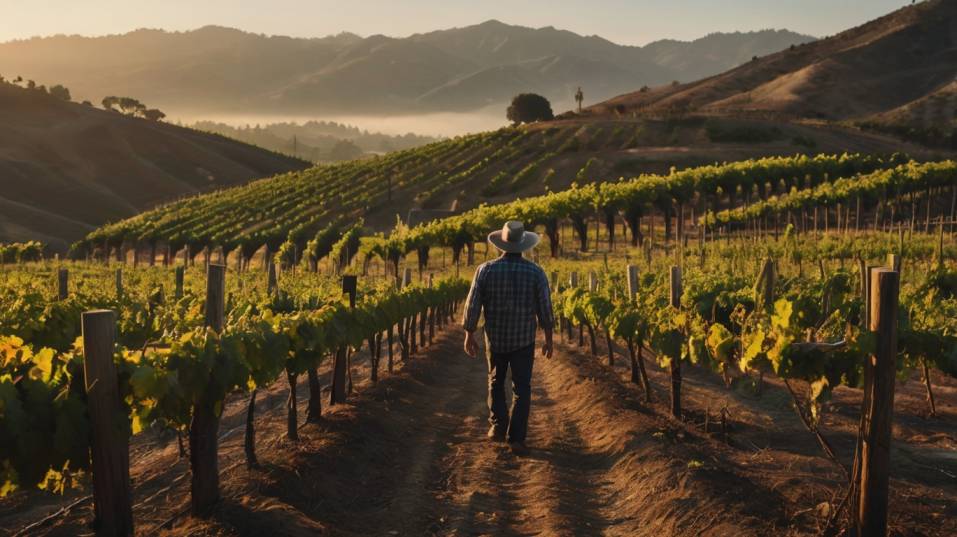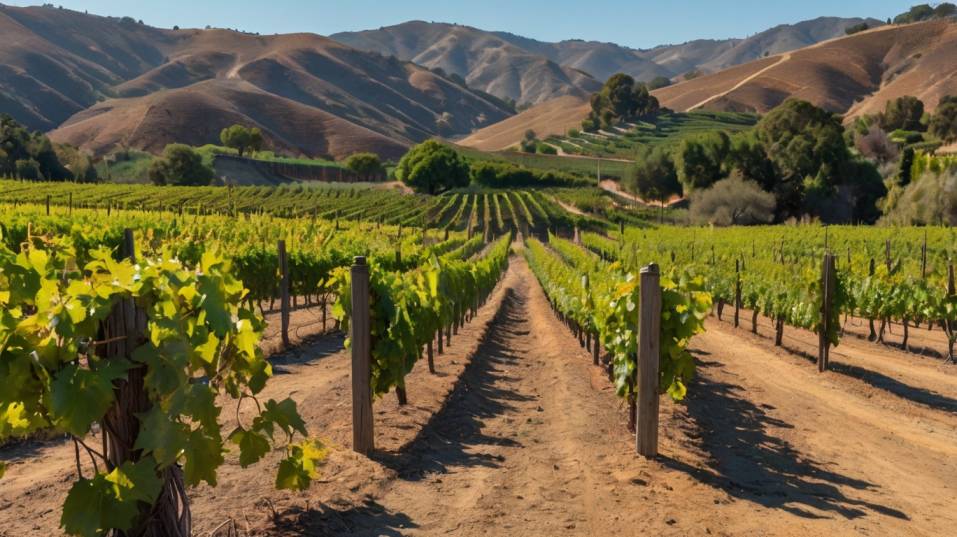California Wines: What They’re Known For (And Why)
Curious about California wine? Learn how place, grape, and winemaking choices shape flavor—so you can taste smarter, not just drink more.

What makes California wine so different—and why should you care? If you’re just getting into wine, California is the perfect place to start.
These wines aren’t bound by strict rules or ancient traditions. Instead, they reflect choices—bold, clear, and expressive.
Learning how those choices shape flavor helps you taste more confidently, pick bottles with purpose, and sharpen your palate with every glass. Ready to move from curious sipper to informed drinker? Start here.
California Isn’t About Rules. It’s About Expression.
Most European wine regions are built on regulation. Certain grapes. Certain methods. Even how a label looks is often decided by decades of tradition. California flips that model.
Winemakers here aren’t bound by centuries of laws—they’re guided by intent. And when you taste a California wine, you’re often tasting a series of decisions: When to pick? How to ferment? Oak or no oak? Age it or bottle it fresh?
This freedom is what defines California wine. It’s not lawless—it’s deliberate. A Cabernet Sauvignon from Napa might lean dense, structured, and age-worthy.
But drive 90 minutes to Paso Robles, and that same grape can feel juicier, more relaxed, less driven by tannin. It’s not better or worse. It’s different. And that’s your opportunity.
Understanding the range doesn’t just help you find what you like—it sharpens your palate. You begin to notice not just “this tastes good,” but why it tastes that way. That shift in mindset is how you move from casual drinker to intentional taster.

The Land Shapes the Wine
California is big—larger than most countries that make wine. That size means endless microclimates, from fog-wrapped coastal slopes to sunbaked inland valleys. The best wines aren’t just made in California—they’re made of California.
Here’s what that means when you’re tasting:
- Warm climates (like parts of Napa, Lodi, or Paso Robles) give you ripe fruit, softer acidity, and fuller body. You’ll notice more plushness, rounder texture, and often higher alcohol.
- Cooler climates (like Sonoma Coast, Santa Barbara, or Mendocino) dial up acidity, preserve freshness, and bring out more nuance in aromatics and texture.
This variation is your roadmap. When you learn how place shapes flavor, you get better at predicting what’s in the glass before you pour. That’s power—especially when you're scanning a wine list or making a choice at a shop.
Grape by Grape: Why California Styles Matter
Forget what you think you know about the major grapes. In California, even the familiar can surprise you.
Cabernet Sauvignon
This is California’s anchor grape, especially in Napa. Expect bold black fruit—think cassis and blackberry—with firm tannins and often a healthy dose of oak.
But it’s not one-note. In hillside vineyards, you’ll find more minerality and lift. In valley floor sites, the wines tend to feel plusher and richer.
Cabernet is a great grape to learn structure—how tannin, acid, and fruit balance (or clash). Try tasting one after 30 minutes of air. Then try it again after two hours. Notice the shift? That’s part of the story.
Chardonnay
It’s not all butter and oak. Yes, some versions are creamy, soft, and rounded. But others—especially from places like the Santa Cruz Mountains or Sonoma Coast—are sleek, mineral, and taut.
California Chardonnay is the perfect grape for understanding texture. Some feel waxy. Others feel chalky. Some dissolve on the tongue like lemon cream. Others snap with green apple acidity.
Learn to look past “oak or no oak.” Start paying attention to shape—how the wine moves from front to back on your palate.
Pinot Noir
California Pinot teaches you elegance—or at least how to recognize it. These wines are usually lighter in body but complex in aroma: cherry, forest floor, spice, even cola in some riper versions. The best examples are expressive without shouting.
Because Pinot is thin-skinned and delicate, it’s sensitive to place. A bottle from Santa Barbara will taste wildly different than one from Anderson Valley.
That sensitivity makes it a great teacher. You’ll notice subtle shifts faster with Pinot than almost any other red.
Zinfandel
Zin is California’s homegrown identity grape. It’s often bold, juicy, and fruit-driven—blackberry, raspberry, even chocolate or baking spices. But in the right hands and the right sites, it can show serious balance.
Use Zinfandel to explore ripeness. Taste one that clocks in at 15% ABV and compare it to one at 13.5%. Notice the difference in heat, weight, and finish. Learn how winemakers handle power—and how well (or poorly) it’s integrated.
Sauvignon Blanc, Chenin Blanc, Riesling
These whites are less talked about but incredibly useful if you’re building your palate. Sauvignon Blanc teaches you about acid and herbal edge.
Chenin Blanc teaches you about texture and waxiness. Riesling shows you what layered aromatics and a touch of sweetness can do when done right.
If you’ve been drinking mostly Chardonnay, these grapes will give you a whole new reference point for freshness and balance.
Techniques That Shape Taste
It’s not just grapes and geography. Winemaking choices directly affect flavor. Knowing a few of the basics helps you see behind the curtain:
- Oak Aging adds vanilla, toast, and spice—but also softens tannin and rounds texture. Not every wine needs it. Good winemakers use it like seasoning, not a mask.
- Malolactic Fermentation (often used in Chardonnay) smooths acidity and adds creaminess. If your wine tastes like buttered popcorn, this is why.
- Skin Contact and Time on Lees can add weight, body, and complexity—especially in whites. These are good clues to how much depth you can expect.
These techniques aren’t just academic. Tuning into them helps you describe what you like—and makes you a smarter buyer. You won’t just pick a wine because the label looks familiar. You’ll pick it because you understand what it promises.
Drink to Understand, Not Just Enjoy
California is an ideal classroom because the wines are expressive and direct. They don’t require years of study to appreciate, but they reward attention.
Here’s how to train your palate with them:
- Taste side by side: Compare a coastal Chardonnay to an inland one. A Napa Cab next to one from Mendocino. A Zinfandel at 15% ABV and one at 13%. The differences will jump out—and that clarity builds confidence.
- Let the wine evolve: Don’t rush. Taste a wine right after opening, then again 30 minutes later. Smell it at room temp and chilled. Notice how oxygen and temperature shift the experience.
- Take notes, even mental ones: You don’t need a journal, but at least ask yourself what you noticed. What stood out? What lingered? What didn’t work?
When you drink with this kind of attention, wine stops being just a thing in a glass. It becomes a tool for understanding flavor, place, and even your own preferences.
Final Thoughts
California wines aren’t just approachable—they’re revealing. They let you see what ripeness tastes like. What oak feels like. How site changes flavor. They teach you to look deeper and drink with more intention.
So try something today. Grab a California wine you haven’t tasted before—maybe a coastal Syrah, a dry Chenin Blanc, or an unoaked Chardonnay. Taste it slowly. Ask a few questions. Let it unfold.
This is how you get better at wine—not by memorizing facts, but by building experience. California gives you the freedom to explore, to experiment, and to enjoy without needing permission.
Use it. Drink smarter. Taste sharper. And keep going. Your next glass is your next lesson.




